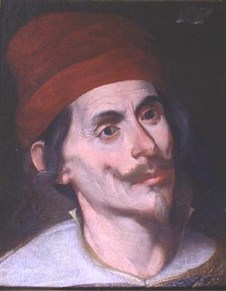Tommaso Aniello called Masaniello
 Born June 20, 1620 in Naples, Tommaso Aniello lived in the popular Mercato neighbourhood working as a fishmonger’s garzone. He frequently smuggled to escape the attention of the tax collectors which frequently led him to prison. Before the outbreak of the revolt, on 7 July 1647, he came into contact with Giulio Genoino, the prominent figure of the riots of 1620, in the final phase of the government of the Duke of Osuna. Under Genoino’s careful guidance, the young fishmonger became a guide and a symbolic figure of the revolt. The highest point of its power was the oath imposed on the viceroy, drawn from Genoino’s demands, summarizing popular requests and in particular the abolition of the gabelle taxes and parity of the votes of the people and of the nobles in the city government. Unable to be controlled even by Genoino and unwilling to give up the military command of the city, Aniello was killed on the orders of his own comrades on the morning of 16 July. His body was dismembered and carried in procession through the streets of the capital.
Born June 20, 1620 in Naples, Tommaso Aniello lived in the popular Mercato neighbourhood working as a fishmonger’s garzone. He frequently smuggled to escape the attention of the tax collectors which frequently led him to prison. Before the outbreak of the revolt, on 7 July 1647, he came into contact with Giulio Genoino, the prominent figure of the riots of 1620, in the final phase of the government of the Duke of Osuna. Under Genoino’s careful guidance, the young fishmonger became a guide and a symbolic figure of the revolt. The highest point of its power was the oath imposed on the viceroy, drawn from Genoino’s demands, summarizing popular requests and in particular the abolition of the gabelle taxes and parity of the votes of the people and of the nobles in the city government. Unable to be controlled even by Genoino and unwilling to give up the military command of the city, Aniello was killed on the orders of his own comrades on the morning of 16 July. His body was dismembered and carried in procession through the streets of the capital.
Read more:
-
M. Schipa, Masaniello, Bari 1925.
-
S. D’Alessio, Masaniello. La sua vita e il mito in Europa, Roma 2007.
- F. Benigno, Mirrors of Revolution. Conflict and Political Identity in Early Modern Europe, Turnhout 2010.
